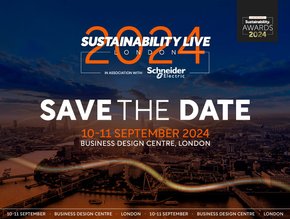Making infrastructure projects greener to achieve UN SDG 9

Construction projects are often a disruption, but are an unavoidable fact of life. They last a long time and the impact they have is felt for years. Infrastructure, in particular, effects millions of people’s lives in multifaceted ways over many years.
That is why the United Nations’ Sustainable Development Goals (SDGs) address it. Goal 9 of the SDGs overlaps with environmental, social, and governance (ESG) objectives as it calls for the realisation of "quality, reliable, sustainable and resilient infrastructure, including regional and trans-border infrastructure, to support economic development and human well-being, with a focus on affordable and equitable access for all".
The long-lived nature of infrastructure assets exposes institutional investors to risks of disruptions and stresses, often linked to environmental, social and governance (ESG) factors. ESG factors affect the infrastructure lifecycle from the pre-construction to the operational phase - getting it right early makes a big difference.
The introduction of policy, regulatory, and reputational risks may also amplify ESG risks, so a proper implementation of delivery mechanisms and the proper and efficient management of sustainable infrastructure.
Combining infrastructure projects with environmental and societal goals
In many developed countries, a significant portion of the existing infrastructure is nearing the end of its life, becoming outdated and falling out of today's requirements, which may be caused by obsolescence, economic growth, demographics, shifts in values, or environmental sustainability.
Meanwhile, in the less developed part of the world, infrastructure investment needs to be boosted to better provide people with access to essential services such as energy and drinking water and better the flow of goods and people.
According to a study conducted in 2020, the frequency of coastal flooding for the next 80 years is expected to rise by about 50%, threatening human lives and habitat and affecting assets worth 20% of global gross domestic product, which might mean a call for more construction and retrofitting in the near future.
Many countries have introduced green building standards, but a construction project can go beyond mere environmental goals. For instance, Geoship, a California-based homebuilding cooperative, plans to tackle the issue of home affordability and sustainability at once as it introduces highly resilient bioceramic domes that can survive under the increasingly harsh weather.

Setting environmental and social goals before starting an infrastructure project
A report by Coro Strandberg sets up the options available to organisations to accelerate societal benefits through their construction projects. It advises infrastructure builders to fully mobilise institutional assets, relationships, resources, and platforms to help communities and overall society course-correct. These measures are expected to leverage such construction projects for scale and impact.
Before the project even begins, companies should consider the level of their ambition regarding the larger purpose of such a project. Common social impacts associated with construction projects include land acquisition and disposal, relocation of local residents, and health risks due to the release of waste throughout the project. Companies need to assess these risks and how they can minimise them.
Organisations should also determine the social purpose of the project and plan the way they can imbue the purpose throughout all phases of development and operation. With this in mind, companies can develop social-change initiatives to pursue along the project's entire lifecycle, from pre-planning, initiation, to operations and legacy.
In addition to including social goals in your project's planning, design and delivery stages, you can do the same with your project's value chain. The report argues that as institutions and their communities identify a social purpose for the construction, it can go beyond meeting their core functional needs since it fosters societal benefits throughout the planning and construction process.






